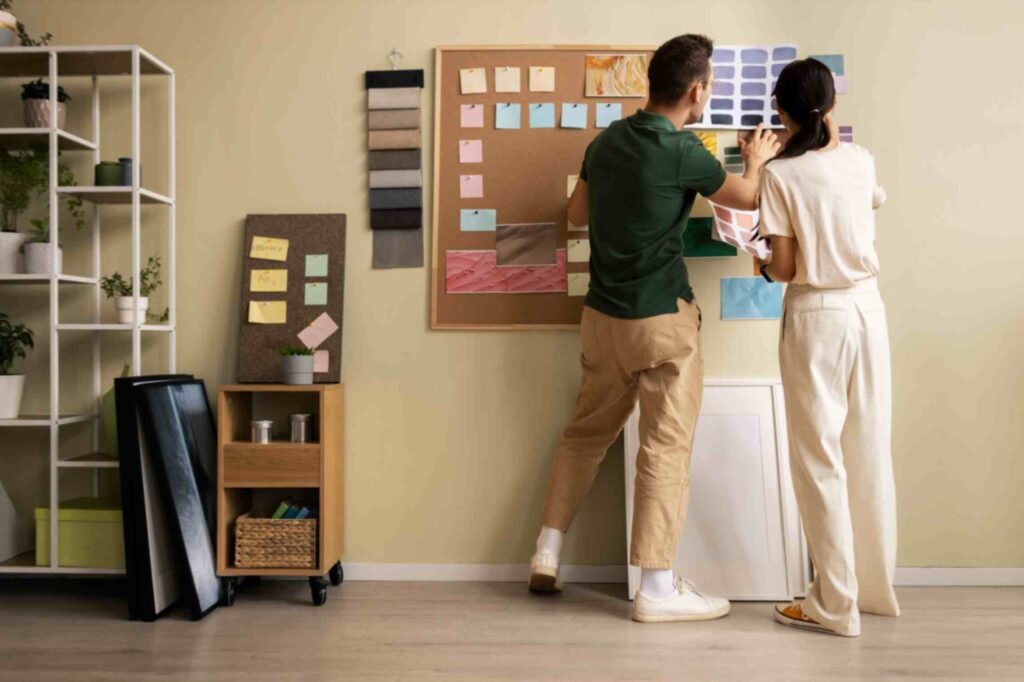Key Takeaways:
- Careful planning and prioritization is key to building your dream home affordably.
- Efficient home design, cost-effective material selection, and energy-efficient features can significantly reduce construction and utility costs.
- Exploring pre-designed house plans, contributing sweat equity, and budgeting for the unexpected can help keep your project on track financially.
Let’s be honest – designing and building your dream home can be an expensive endeavor. But with the right approach, you can create a stunning, comfortable living space without emptying your bank account. In this comprehensive guide, we’ll explore proven strategies to help you achieve that elusive balance between your dream home and your budget.
Planning and Prioritizing
- Creating a detailed budget and sticking to it is crucial. Determine your maximum budget upfront and allocate funds accordingly for each aspect of the build. This will help you stay on track and avoid costly overruns.
- Prioritize your essential needs versus nice-to-have features. Identify the must-haves that align with your lifestyle and compromise on the extras that aren’t deal-breakers. For instance, you might prioritize an open-concept layout over a separate formal dining room.
- Involving professionals like architects and designers early on can help you plan efficiently. They can provide valuable insights into cost-effective design solutions and material choices that align with your budget.
Efficient Home Design Strategies
- An open-concept layout with fewer walls and compartmentalized spaces can make your home feel more spacious and functional while reducing construction costs.
- Reducing the overall size and footprint of your home is one of the most effective ways to lower construction costs. Consider building a smaller home with smart space utilization rather than oversizing.
- Simplifying your home’s form by minimizing exterior corners and jogs can also save on materials and labor costs.
Standardizing building products and materials across the project allows you to take advantage of bulk pricing discounts. Here’s a table showcasing some cost-effective material options:
| Material | Cost-Effective Options |
|---|---|
| Flooring | Laminate, vinyl plank, carpet tiles |
| Countertops | Quartz, solid surface, laminate |
| Cabinetry | Stock or semi-custom lines |
| Siding | Fiber cement, vinyl |
Cost-Effective Material Selection
- Choose cost-effective materials that strike a balance between quality and budget. Avoid over-upgrading in areas that don’t significantly impact your day-to-day living experience.
- Whenever possible, opt for standard products over custom options, which tend to be more expensive.
- Consider using higher-quality materials strategically in main living areas where you’ll spend the most time, and scale back in less-frequented spaces.
- Get creative when it comes to expensive items like cabinetry. For instance, you could mix stock cabinets with custom pieces in key areas like the kitchen island.
Energy Efficiency as a Cost-Saver
- Building with energy efficiency in mind can save you a significant amount of money on utility costs over the life of your home.
- Proper insulation and air sealing techniques are crucial for minimizing heat loss and reducing heating and cooling costs.
- Investing in energy-efficient windows, appliances, and HVAC systems may have a higher upfront cost, but the long-term savings can be substantial.
- Don’t forget to take advantage of government incentives and tax credits for incorporating green upgrades into your home design.
DIY and Sweat Equity
- As a homeowner, you have the opportunity to contribute your own labor to the project, known as “sweat equity.” This can significantly reduce construction costs.
- Sourcing and purchasing materials directly, rather than going through a contractor, can also help you save on markups.
- Reusing and repurposing existing materials and fixtures whenever possible is another cost-saving strategy that’s environmentally friendly.
Pre-Designed Home Plans
- Consider using pre-designed home plans instead of hiring an architect to create a custom design from scratch. This approach can save you thousands of dollars in architectural fees.
- There’s a wide variety of pre-designed plans available across different styles and layouts, so you’re sure to find something that suits your needs and taste.
- If you find a pre-designed plan you love but want to make some tweaks, you can work with the designer to customize it for a more personalized touch.
Budgeting for the Unexpected
- No matter how carefully you plan, unexpected expenses are bound to pop up during a home building project. Including a buffer in your budget, typically 10-20% of the total cost, can help you stay ahead of these surprises.
- Obtaining all necessary permits and approvals upfront can help you avoid costly delays or rework down the line.
- Don’t forget to factor in additional costs like temporary housing or takeout meals during the construction phase, as your living situation may be disrupted.
Conclusion
Building your dream home on a budget is entirely achievable with careful planning, smart design choices, and a willingness to get creative. By following the strategies outlined in this guide – from prioritizing your needs to exploring cost-effective materials and pre-designed plans – you can create a beautiful, functional living space that meets your needs without breaking the bank.
Remember, the process may require some compromises along the way, but approaching it with an open mind and a focus on your long-term goals can make all the difference. With the right approach, you’ll be able to enjoy the rewards of your hard work and thoughtful planning for years to come in a home that truly feels like your own.
